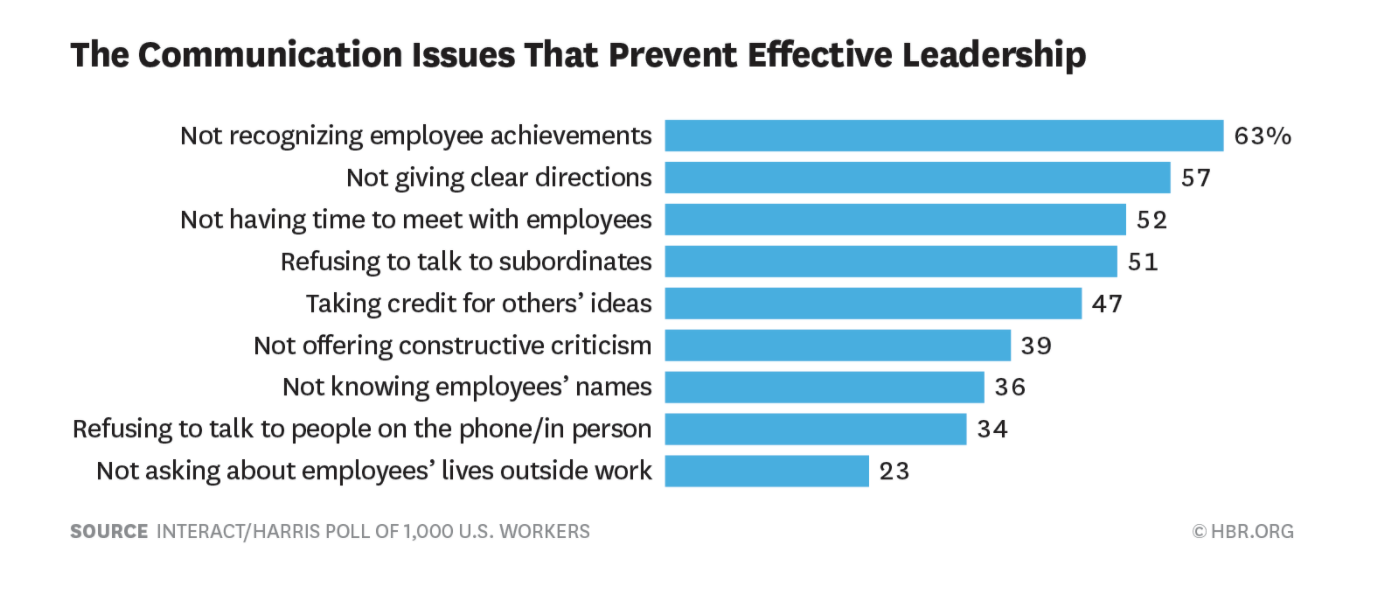I am extremely interested in leadership and how to do things better. Recently, I came across a 2018 article from the Harvard Business Review entitled, “The Most Common Type of Incompetent Leader.” Not wanting to be an incompetent leader myself, I read through the article. It was interesting to learn that the most common type of incompetent leader is an absentee leader. Specifically, “people in leadership roles who are psychologically absent from them.” In a related 2015 article, a survey showed that “eight of the top nine complaints about leaders concerned behaviors that were absent; employees were most concerned about what their bosses didn’t do.”

To close this out before I move onto my main point, the article alleges that the main reason this is so prevalent, yet rarely dealt with, is because there are other more pressing problems inside of the organization (i.e., seemingly more serious than absentee leadership). As it turns out, absentee leaders are also really great at flying under the RADAR, so it’s easy to see how other, more visible, problems take center stage.
In addition to wanting to be a great leader myself, I’m also always thinking about how the workplace can be better for everyone. And, at Basically, we believe that starts with the foundation of knowing where things are and what’s expected. As I read the above article with the purpose of intentionally avoiding absentee leader pitfalls, it occurred to me how the same concept also relates to the distribution of information at a company. Most companies put out information for their employees in a disjointed and inconsistent way (a sort of distribution carelessness or absenteeism) – not giving the manuals, documents, memos, and updates the attention they deserve. I have personally seen this at more than 1,000 companies in the last 20 years. Does any of this sound familiar in your organization?
- How company information is processed varies from department to department.
- In one department, some of the manuals are placed on a Sharepoint site. In another, all of the manuals are located on an open company server with no protection. Still other departments place all of their content on a website that anyone (even the public) can download from.
- Staff are given paper copies of manuals or documentation when they are hired, and then subsequent updates are sent to each employee via an email or, worse yet, never sent or communicated at all.
This is certainly damaging in non-regulated industries, but it becomes even more so when government-mandated compliance is required. Several years ago, in my favorite “You’ve got to be kidding me” moment, I was informed by the Head of Compliance at a globally-recognized UK firm that he didn’t care if his people actually read the federally required material but only that they checked a box stating that they did. When I pressed him, incredulously, to make sure I understood him correctly, he affirmed that I had by saying, “Look, if they choose not to read the information, that’s on them. The fact is that all I need to do is to cover our ass with the regulator. I don’t care if they read it or not.” Wow! Just wow! That’s a place where I never want to work. This is also a business where mistakes can result in loss of life (hence the government oversight), so it’s also a place where I never want to be a client – and haven’t been since that conversation took place.
I sincerely hope by reading this post that you will start to see what a serious and incredibly devastating problem this really is. Getting your distribution process cleaned up and verifiable is the first step to cleaning up your organization, your culture, your employee engagement, your client satisfaction, and your profitability. When would now be a good time to start doing this right?


